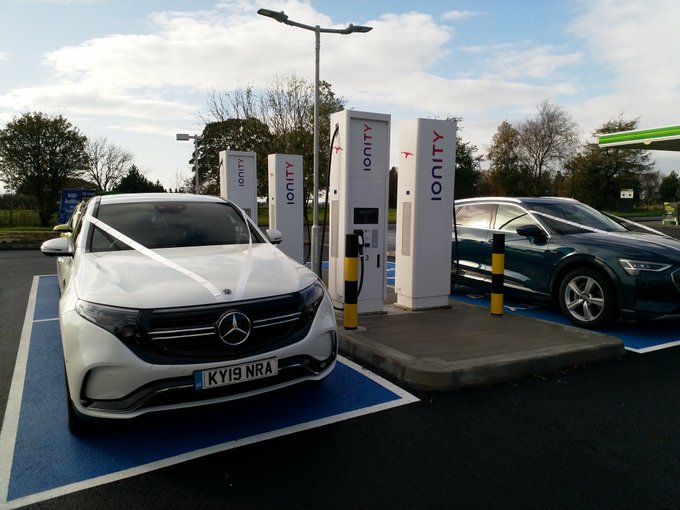Big arrays of batteries are already making their presence felt in the UK’s energy system. A decade ago, Energy Storage News notes, there were no grid connected batteries. But when a million people suffered a power cut one day this August, after a lightning strike, 475MW of batteries were used to help get the network up and running properly again.
Most future energy plans require lots more batteries. They’ll help even out electricity supply from a new mix of sources, and meet the demands of new users, such as electric vehicle owners or buildings switching to electric heating.
Now Avonmouth is set to be the site of a new, 50MW battery array, one of a network of installations being developed by Pivot Power that will all have high voltage grid connections.
As well as helping balance energy use so more renewables can be used on the grid, the project will have a “private wire” that can supply electricity to local users, most likely those who need high power charging points for electric vehicles.
As this useful piece on the BBC website explains, there will need to be lot of this kind of infrastructure installed as government promotes the switch to electric cars and buses. Here’s an example of a rapid charging hub just unveiled in Scotland – where you can top up a car in 20 minutes, provided it can cope with the 350KW hook-up! (And a lot more cars will be configured for this in future).

Once it’s operating, the battery unit will only use the grid link for short periods, so Pivot Power are looking for others who would find the connection useful. They might be community groups, businesses or local authorities.
After a first meeting organised by Bristol Energy Co-op, Pivot Power made another presentation to Zero West’s infrastructure group, to gauge local interest in joining the Avonmouth based project. The current Pivot portfolio plan provides for 2.25GW of storage across 45 different sites across England & Wales. That is the kind of thing that will need to be replicated quite a few times to operate the new, decarbonised energy system we need.
Edward Sargent of Pivot Power explains that the transmission system is the key to making use of mass storage. We’ve got used to calling that the grid – but not thought about it much under the old dispensation. But a secondary storage facility like this relies on a high capacity grid connection, and then on a “private wire” network for customers served by what is, in effect, a secondary capacity provider.
The investment is in the battery installation, which will cover roughly one and a half acres, and the private wire. In a similar development in Oxford, which has some funding from Innovate UK, there will be 9km of private wire from day 1. The likely customers in our region, which like Oxford has a city surrounded by motorways, are similar.
They include motorway service station charging hubs and bus stations. Input to the batteries comes from users who produce energy rather than consume it, and Avonmouth is looking promising in that respect too, the company believes. “What excites me about Bristol is the potential to help some of the sheds in the area”, says Sargent.
A glance at google Earth around the M49 confirms that the area is a mass of distribution depots and storage centres for large companies, few of whom use their extensive roof space for solar PV. Connection to storage is not the only requirement for owners to move on this – but it is a vital prerequisite for solar arrays that are worth having – the kind that can produce more energy than buildings can use. Removing the connectivity barrier, “is a bit of a no brainer, to help people see the choices in front of them clearly”, says Sargent.
This is a long-term effort, with this particular installation unlikely to appear for a couple of years at least. But if everything goes smoothly, our region will have an early working example of a facility that will become a familiar part of the new energy landscape.
More on Pivot Power here. And here’s their version of how it will all work…
More on how batteries helped recovery from the power cuts from Wired magazine here.
And there’s an interesting rundown on the role of battery storage in the larger system (from a US point of view) here.

